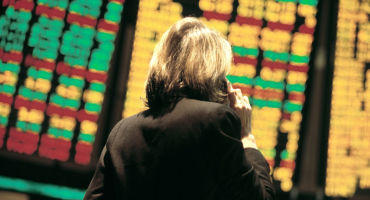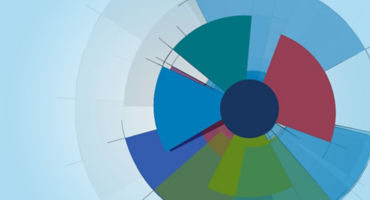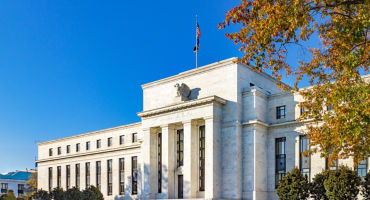- Multi-Asset Strategist
Skip to main content
- Funds
- Insights
- Capabilities
- About Us
- My Account
The views expressed are those of the author at the time of writing. Other teams may hold different views and make different investment decisions. The value of your investment may become worth more or less than at the time of original investment. While any third-party data used is considered reliable, its accuracy is not guaranteed. For professional, institutional, or accredited investors only.
The US Federal Reserve (Fed) is one of the most influential drivers of global financial markets, so its monetary policy decisions and actions are obviously critically important. Sometimes, however, the market implications may not be as clear-cut as they might seem.
For example, conventional wisdom tells us that as interest rates rise, existing bonds decline in value. But today’s macro environment is more complex than this simple rule because of the current mix of stubbornly high inflation, weakening economic growth, and a not-so-remote risk of recession. Against this backdrop, I believe higher-quality, long-duration fixed income assets may prove resilient even if the Fed keeps raising short-term interest rates for many months to come.
The Fed hiked rates by 75-basis points (bps) at its July 27, 2022 FOMC meeting, as widely expected. By contrast, the Fed’s 75-bp rate hike in June overshot expectations for a 50-bp increase. However, I would argue that the central bank’s “surprise” move in June actually lagged the latest available US inflation data, as it came after an eye-popping headline Consumer Price Index (CPI) reading of 9.1% and a spike in consumer inflation expectations. The takeaway? Neither the market nor the Fed has a crystal ball but if past is any prologue, it is quite possible that the Fed will continue to follow the markets (based on incoming data), not lead them. But that’s not necessarily bad news for bondholders with longer-term investment horizons.
Interestingly, while fed funds rate futures contracts are signaling that the market believes the Fed’s terminal rate for 2022 will be around 3.25%, December 2023 futures contracts are currently trading closer to 2.75%, suggesting a belief that the Fed will reverse course and begin cutting rates by mid-2023 (Figure 1). Optimistic though it may be, if that forecast is indeed correct, it would certainly make a good case for owning US duration — particularly longer-duration, higher-quality bonds. Of course, the market could well be wrong.
But even if the market is wrong, I think the Fed is more likely to hike rates aggressively rather than too timidly. (In the FOMC press conference following the latest 75-bp hike, Fed Chair Powell commented that “doing too little raises the cost if you don't deal with it in the near term.”) In that case, I believe longer-term bond yields will fall as investors foreshadow more meaningful economic slowing in response to Fed tightening. We’ve already seen some early evidence that the US economy is feeling negative impacts from the Fed’s intense focus on “breaking inflation’s back,” even at the expense of growth:
The risk is that the Fed could back off from policy tightening in the face of weak growth, even while high inflation persists. In that case, I think the market would question the Fed’s credibility and signal as much with higher long-term bond yields — not a chance the Fed is willing to take, in my view.

The spending bubble driving corporate profits looks set to burst
Continue readingFinancing the AI boom: credit markets at a crossroads
Continue readingURL References
Related Insights

Opportunity ahead: Optimism or illusion?
Explore our latest views on risks and opportunities across global capital markets.

Weekly Market Update
What do you need to know about the markets this week? Tune in to Paul Skinner's weekly market update for the lowdown on where the markets are and what investors should keep their eye on this week.

The spending bubble driving corporate profits looks set to burst
US corporate profits have been fueled by government deficits, low rates, and consumption — drivers now at risk, raising questions about the sustainability of market valuations.

Monthly Market Review — November 2025
A monthly update on equity, fixed income, currency, and commodity markets.

FOMC: Easing into uncertainty
Fixed Income Portfolio Manager Jeremy Forster profiles the Fed's December rate cut, labor market trends, inflation pressures, and the role of anticipated changes to FOMC leaders in 2026.

Financing the AI boom: credit markets at a crossroads
Fixed Income Portfolio Manager Derek Hynes and Fixed Income Investment Specialist Will Prentis examine how the AI financing boom is transforming credit markets and discuss the opportunities and risks it creates for investors.

Low tide, sharp eyes: What to pick up
Fixed Income Managers Campe Goodman and Rob Burn share their outlook for credit in 2026 and discuss how investors can reposition for an environment where opportunities are harder to find.

Finding durable value amid shifting currents
Fixed Income Strategist Amar Reganti and Investment Director Marco Giordano explore how to approach bond investing in 2026. They see durable value for investors who can flexibly adjust to the shifting currents ahead.

Rapid Fire Questions with Ross Dilkes
In this edition of “Rapid Fire Questions,” fixed income portfolio manager Ross Dilkes shares his views on the Asia credit market—covering the macro outlook, China’s momentum, the most compelling opportunities across the region, and key risks shaping the next 12 months.

Investing in 2026: prepare for inflationary growth
Macro Strategists John Butler and Eoin O'Callaghan share their annual macro outlook and discuss likely implications for markets and investors. They outline four potential scenarios graded by level of probability.

Constructive, selective, resilient
Amar Reganti, a member of our Insurance team, explains why he believes insurers should remain selectively risk-on while prioritizing high-quality income and preserving flexibility to add risk as valuations improve.
URL References
Related Insights
Monthly Market Review — November 2025
Continue readingBy